Cuyahoga Falls School
“It is so quiet in here. It is so calm.” This is what I have been hearing teachers and parents say about my room. Usually it takes several months for my room to become normalized but this year it was on it’s way to being normalized within a month of school starting. I credit those around me for the earlier than usual success. Miss Kathleen and Miss Dana are wonderful teachers and work well with the students. They are fun yet firm and know how to handle difficult situations well. When I mentioned “those around me” I didn’t only mean the teachers but I want to give credit to the older students and the leaders of the room. They are showing the newer/younger students how to work with materials and are guiding them through the classroom.
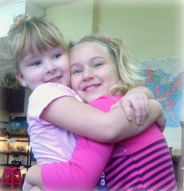 Children love animals, and I enjoy teaching them about different types of animals. This month we started by discussing mammals. I chose mammals because we are mammals. We learned that mammals have hair or fur, are born alive, and drink mother’s milk when first born. We learned that mammals are warm blooded (their body temperature remains constant) and that they are vertebrates (have spines). We learned that dolphins and whales are mammals and that the bat is the only mammal that can fly.
Children love animals, and I enjoy teaching them about different types of animals. This month we started by discussing mammals. I chose mammals because we are mammals. We learned that mammals have hair or fur, are born alive, and drink mother’s milk when first born. We learned that mammals are warm blooded (their body temperature remains constant) and that they are vertebrates (have spines). We learned that dolphins and whales are mammals and that the bat is the only mammal that can fly.
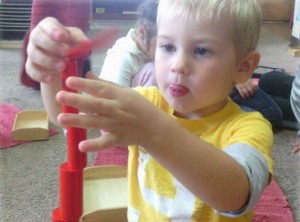
Then we slithered our way into discussing reptiles. We came to the conclusion the snake is the most popular reptile. We learned reptiles are cold blooded, vertebrates, lay hard shelled eggs, and have dry scales. The children enjoyed seeing our own albino garter snake and a visiting black garter snake. The geckos were just as appreciated.
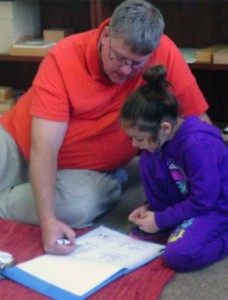 Next, We hopped into our discussion of amphibians. We all agreed that the frog was the most popular amphibian and that amphibians are cold blooded and vertebrates. We also learned their skin is moist and soft and they can live on BOTH land and water. Amphibians lay eggs, these eggs have no shell but are like jelly. The children were encouraged to look for our Pac Man Frog and our Eastern Toads in our nature center.
Next, We hopped into our discussion of amphibians. We all agreed that the frog was the most popular amphibian and that amphibians are cold blooded and vertebrates. We also learned their skin is moist and soft and they can live on BOTH land and water. Amphibians lay eggs, these eggs have no shell but are like jelly. The children were encouraged to look for our Pac Man Frog and our Eastern Toads in our nature center.
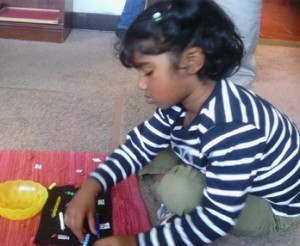
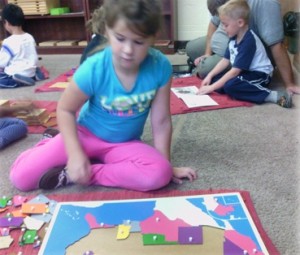
After learning about amphibians, we swam to our friends called fish. We learned that fish are cold blooded (their body temperature changes to the temperature in their environment) and are vertebrates. We learned that most fish have scales, gills and fins. Some fish lay eggs and some fish are liver bearers (babies are born alive). We introduced a new word, “habitat”. This is where something lives and the fish’s habitat is the water. The children were thrilled to learn that the shark is a fish.We then flew with the animals called birds. Birds have feathers, are warm blooded and are vertebrates. All birds lay hard shelled eggs and have wings. All birds have wings but some birds are flightless (cannot fly) such as the penguin, ostrich, and emu.
Cultural Studies
At circle time we count to ten in different languages. We now know how to count to 10 in English, Spanish, Sign Language, German, French, Greek, Japanese, Arabic with the Lebanese dialect, Italian, and Romanian.
Kindergarten 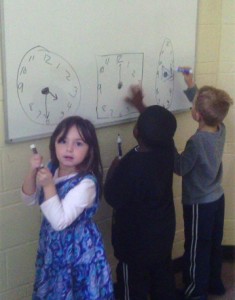 During Kindergarten Lesson, students learned about landforms. Ask them what the definition of a lake, island, bay, peninsula, gulf, harbor, cape, isthmus, straight, chain of lakes, and archipelago. We went over telling time to the hour, half past, and quarter after. Your kindergartners now know how to count to ten in, English, Spanish, Sign Language, German, French, Greek, Japanese, and Arabic with the Lebanese dialect, Italian, Russian, Romanian, Swedish, and Tagalog.
During Kindergarten Lesson, students learned about landforms. Ask them what the definition of a lake, island, bay, peninsula, gulf, harbor, cape, isthmus, straight, chain of lakes, and archipelago. We went over telling time to the hour, half past, and quarter after. Your kindergartners now know how to count to ten in, English, Spanish, Sign Language, German, French, Greek, Japanese, and Arabic with the Lebanese dialect, Italian, Russian, Romanian, Swedish, and Tagalog.
